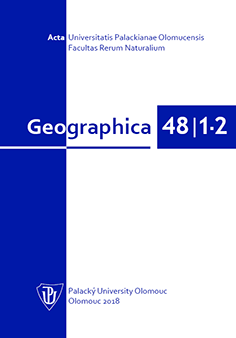Geographica 48/1-2 (2019)
|
Acta Universitatis Palackianae Olomucensis |
 |
| Back to contents | Zpět na obsah |
City conglomerates in the Czech Republic
Robert Szmytkie
Full text: ![]() PDF (1 MB)
PDF (1 MB)
Received: 4 December, 2017
Accepted: 8 October, 2018
Abstract
The main purpose of this article is to identify city conglomerates which function in the settlement system of the Czech Republic and to present their typology with reference to the characteristics of their form of settlement and their functional and spatial structures. This paper is comprised of two principal parts. The first part discusses the issue of city conglomerates in the context of the discourse regarding polycentric urban forms, and attempts to organize the terminology applied to city conglomerates and double towns in particular. The second part raises the issue of urban incorporation within the Czech Republic, with a particular focus on the causes underlying the loss of administrative independence. Against this background, seven towns with the characteristics of double towns, i.e. city conglomerates that contain within their borders two settlements with their own urban pasts and characteristics, have been identified. Four of the identified double towns (Brandýs nad Labem-Stará Boleslav, Frýdek-Místek, Sedlec-Prčice and Veselí nad Lužnicí-Mezimostí nad Nežárkou) have a twin layout, in which their parts have similar functions and represent competing centres (focal centres of similar rank). The other three double towns (Bohumín, Hranice-Drahotuše, Kutná Hora-Kaňk) have a satellite (monocentric) layout with the constituent parts of varying degrees of importance, regardless of their functional type (the larger town is usually several times larger than the smaller one).
Key words
city conglomerates, double towns, polycentric urban forms, administrative changes of cities, Czech Republic
Last modified 13/04/20 | ↑ top